|
|
|||
|
(Back to Preceding Week; on to Next Week) |
|
|
|
FINAL FALL FLING:
BUTTERBUTTS TO MANTIDS Even though winter isn't official until December's solstice, November just about brings an end to autumn here in the Carolina Piedmont. Nearly all our Neotropical avifauna have departed for locations closer to the equator while winter resident birds have begun to arrive in good numbers from New England and Canada. Tree leaves are at their colorful prime and the vast majority of flowering plants have replaced their blossoms with some sort of seed. Outdoor temperatures are notoriously unpredictable at this time of year, with overnight lows near freezing giving way to daytime temps in the 80s--making it difficult to know whether to load the wood stove or turn on the air conditioner. Yes, it's an interesting time for the nature observer, a time when we're alternately surprised by things unusual and reassured by others that are commonplace. Expecting both the expected and the unexpected, this week we explored Hilton Pond Center to see just what we could find during what we're calling our "Final Fall Fling" of 2007.
All text & photos © Hilton Pond Center Speaking of migrant birds . . . one sure sign summer is gone, fall has come, and winter is soon on the way is the overnight appearance around Hilton Pond of a drab-colored warbler. The little bird in question has dull brownish-gray on its back, shows dark streaking on an otherwise light breast, sports two white bars per blue-black wing, and bears a thin white eye ring. Most of our breeding and Neotropical warblers disappeared weeks ago, but this newly arrived species began replacing them in mid-October and will hang around all winter, occasionally flashing one other field mark that is a giveaway identification hint: A bright yellow spot at the base of its tail (above).
We always expect Yellow-rumped Warblers in November--even though they appear some years in much smaller numbers--but there's one bird that never fails to delight and surprise us when it shows up in winter at the Center. We're surprised because this bird is a vireo, and vireos--like most warblers--are generally considered to be cold-weather wimps that must wing their way to tropical climes before our first frost hits. This week's remaining vireo (above) is the Blue-headed, which seems undeterred by plummeting temperatures. A few hang around most winters and on 7 November we managed to net one--a mildly painful reminder that this species is particularly feisty in the hand and has a little hook on the end of its bill. The bird we caught this week was only our 18th of its kind banded at the Center in 25 years. Incidentally, Blue-headed Vireos were split from the Solitary Vireo group when ornithologists determined they and Plumbeous and Cassin's Vireos were all distinct species.
Although most flowering plants have given up trying to blossom, we did manage to find a few asters in bloom at Hilton Pond Center. These qualify as DWCs--"darned white composites" the botanists call them, mostly because so many are similar and thus are difficult to identify to species. (Those in our photo above look a lot like Daisy Fleabane, but we're almost certain they're not.) Composite flowers are actually made up of TWO flower types: Sterile "ray flowers" (white in this case), and the central yellow "disc flowers" that actually produce seeds. The ray flowers--glowing brightly in the November sun--serve to attract the attention of whatever bees, wasps, flies, and other little nectar-loving pollinators might still be flying. Considering that it's November, we have an idea these particular asters--clustered beside some scary-looking blackberry thorns--might wither without achieving their pollination goals.
One of the most fascinating aspects of autumn at Hilton Pond Center is discovering the great diversity of ways our more ephemeral plants guarantee their genes are carried on to a new generation. For example, Anglepod, Gonolobus suberosus--a member of the Milkweed Family--twines its way along the ground and into small shrubs, producing five-inch heart-shaped leaves that turn bright yellow in fall. Its flowers--which smell like carrion--attract flies that bumble around, fertilizing its flowers. By November, the successful Anglepod blossom produces a large green seed pod (above) that gives the vine its common name.
All the milkweeds produce some sort of pod, and the Swamp Milkweed, Asclepias incarnata, is no exception. These days we have a couple of fast-expanding colonies of this pink-flowered species along the banks of Hilton Pond. We didn't plant them, so we can only assume their fluffy seeds (above) blew onto the property on a gusty wind and found habitat to their liking. Swamp Milkweed's slender two-inch pods open much earlier in autumn than the big, fat four-inch fruits produced by Anglepod; the latter are still green and firm and we can't wait for them to open to reveal whether their seeds are just as hairy as those of Swamp Milkweed.
All flora have to find a way to propagate, and the so-called "primitive" plants are no exception. The sedges (Cyperaceae), mostly water-loving species that grow along streams and ponds, are ancient plants that superficially look like grasses but have distinctive triangular stems that set them apart. Sedge flowers aren't all that showy, but their fruit heads (above) still demonstrate just how diverse nature can be when it comes to making seeds. Sedges started appearing around Hilton Pond at about the same time as Swamp Milkweed, but without the latter's fuzzy parachutes sedge seeds may have required birds or small mammals for transport.
Like the Swamp Milkweed, sedges are relatively recent arrivals at Hilton Pond Center. Until 25 years ago previous property owners cut down all vegetation right down to water's edge, and that practice didn't allow for much riparian vegetation. These days the edge of Hilton Pond isn't even where it was six months ago; during the current drought the water level has dropped nearly four vertical feet and the surface area of the pond itself is at least 25% less than this time last year. All this means any sedges and milkweeds formerly on the banks of Hilton Pond are now up to 15 feet from the water, a location that may prove too dry for them to survive unless we get significant precipitation before the next growing season. One organism that has adapted nicely to low water levels is the Great Blue Heron, whose five-inch track (above) indicate it has found new hunting grounds in the now-exposed mud flats around the pond perimeter.
Yes, autumn brings all sorts of evidence that nature is changing drastically with the advent of cool weather. As we returned one afternoon this week from a bicycle ride through the colorful fall countryside, we slowed down near the driveway to Hilton Pond Center. There--crossing the road as we glided to a stop--was a big Chinese Mantid, Tenodera aridifolia sinensis. Lest it get run over by traffic bearing down on us from behind, we snatched the five-inch insect from the asphalt and turned into the drive. The mantid squirmed and squeezed tightly with heavily barbed forelegs; we were glad to be wearing bike gloves at the moment. A swelled abdomen on the praying mantis indicated it was a female laden with eggs, so we parked our bike, went into the Center's old farmhouse, and grabbed our camera, tripod, and close-up lens. Placing the mantid on a convenient tree branch, we snapped off a few shots of the insect's bulbous eyes (above) before she ambled off robotically, out of camera range. We're guessing this mantid will find a suitable twig on which to lay her egg mass and then go off to die, the ultimate end for what was truly her "Final Fall Fling."
All text & photos © Hilton Pond Center
Comments or questions about this week's installment?
Thanks to the following fine folks for recent gifts in support of Hilton Pond Center for Piedmont Natural History and/or Operation RubyThroat: The Hummingbird Project. Your tax-deductible contributions allow us to continue writing, photographing, and sharing "This Week at Hilton Pond." (Please see Support if you'd like to make a gift of your own.)
IMPORTANT NOTE: If you ever shop on-line, you may be interested in becoming a member of iGive, through which nearly 700 on-line stores from Barnes & Noble to Lands' End will donate a percentage of your purchase price in support of Hilton Pond Center and Operation RubyThroat. For every new member who signs up and makes an on-line purchase iGive will donate an ADDITIONAL $5 to the Center. Please sign up by going to the iGive Web site; as of this week, 197 members have signed up to help Hilton Pond Center. It's a painless, important way for YOU to support our work in conservation, education, and research. "This Week at Hilton Pond" is written & photographed You may wish to consult our Index of all nature topics covered since February 2000. You can also use our on-line Hilton Pond Search Engine at the bottom of this page. For a free, non-fattening, on-line subscription to |
|
Make direct donations on-line through
Network for Good: |
|
|
LIKE TO SHOP ON-LINE?
Donate a portion of your purchase price from 700+ top on-line stores via iGive: |
|
|
Use your PayPal account
to make direct donations: |
|
|
SPECIES BANDED THIS WEEK: * = New species for 2007 WEEKLY BANDING TOTAL 12 species 87 individuals YEARLY BANDING TOTAL (2007) 62 species 1,430 individuals 26-YEAR BANDING GRAND TOTAL (since 28 June 1982) 124 species 49,513 individuals NOTABLE RECAPTURES THIS WEEK (with original banding date, sex, and current age) Carolina Chickadee (1) American Goldfinch (1) Northern Cardinal (1) Eastern Towhee (1) White-throated Sparrow (16) Carolina Wren (1) Downy Woodpecker (1) Tufted Titmouse (1)
|
OTHER NATURE NOTES OF INTEREST --Red-breasted Nuthatches are one of the uncommon northern species being reported in good numbers this fall across the Southeast. Two we caught this week were only the eighth and ninth banded at Hilton Pond in 25 years, and the first since the fall of 2001. --It's nice to have locally rare Blue-headed Vireos and Red-breasted Nuthatches to band, but it's even more fulfilling to report the significant number of returning birds listed in the column at left. Of particular interest are the 16 White-throated Sparrows. More than half are from just last year, but the rest are older--some considerably so, and they got even more ancient as the week went on. On 5 Nov we caught birds more than five and six years old and then on 7 Nov netted our oldest-ever WTSP--an after 7th year bird of unknown sex banded 'way back in Dec 2000. (The Bird Banding Lab's record for a WTSP is 9 years, 8 months.) We are always amazed by the local site fidelity exhibited by WTSP, some of which may be breeding as far north as Hudson Bay in Canada. (One of ours banded at Hilton Pond Center was found a thousand miles away in Quebec after being killed by cat.) That birds of any species can find their way back to Hilton Pond Center without satellites or GPS devices is for us one of the grandest wonders of nature. --And speaking of venerable birds, the female Eastern Towhee recaptured on 3 Nov is no "spring chicken," having been banded at the Center in Oct 2001. She is our oldest ever EATO, but far younger than the 12-year-old record holder cited by the Bird Banding Lab. All text & photos © Hilton Pond Center
|
|
|
|
(Back to Preceding Week; on to Next Week) Up to Top of Page Back to This Week at Hilton Pond Center Current Weather Conditions at Hilton Pond Center |
 You can also post questions for The Piedmont Naturalist |
Join the |
Search Engine for |
|
|
This Website

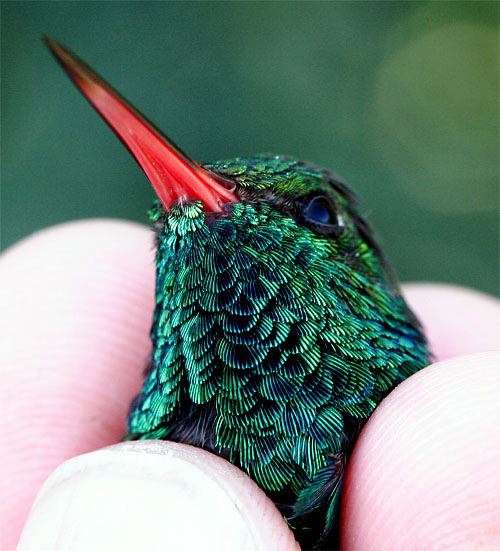 Week One AND Week Two of our annual
Week One AND Week Two of our annual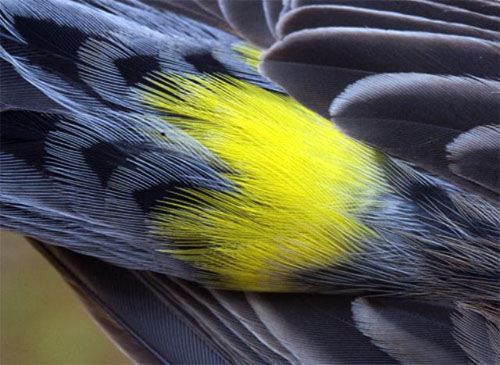
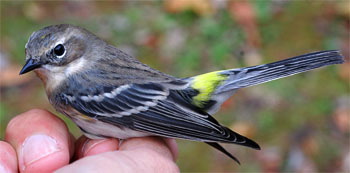 We speak, of course, of the Yellow-rumped Warbler--previously known as Myrtle Warbler and referred to by many birders by the perfectly picturesque nickname of "Butter-butt." Yellow-rumps nest in coniferous forests in the very northern contiguous states and all across Canada into Alaska, but they pretty much take over the warbler niche along the Eastern Seaboard during winter. Here at Hilton Pond Center, yellow-rumps are drawn irresistibly to an artificial water garden beside our old farmhouse, where they bathe in the shallows and likely look for insects or--when it really gets cold--seeds and berries.
We speak, of course, of the Yellow-rumped Warbler--previously known as Myrtle Warbler and referred to by many birders by the perfectly picturesque nickname of "Butter-butt." Yellow-rumps nest in coniferous forests in the very northern contiguous states and all across Canada into Alaska, but they pretty much take over the warbler niche along the Eastern Seaboard during winter. Here at Hilton Pond Center, yellow-rumps are drawn irresistibly to an artificial water garden beside our old farmhouse, where they bathe in the shallows and likely look for insects or--when it really gets cold--seeds and berries.



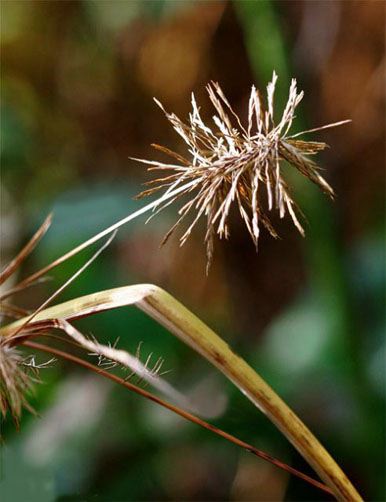
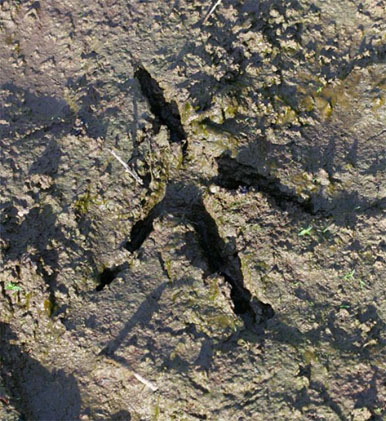



 Oct 15 to Mar 15:
Oct 15 to Mar 15: